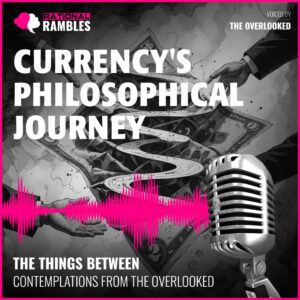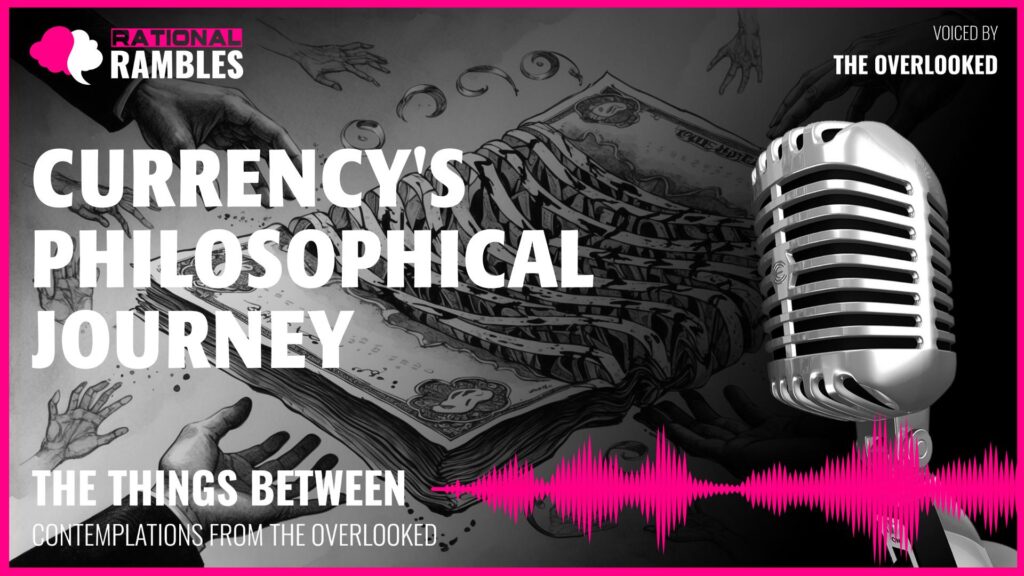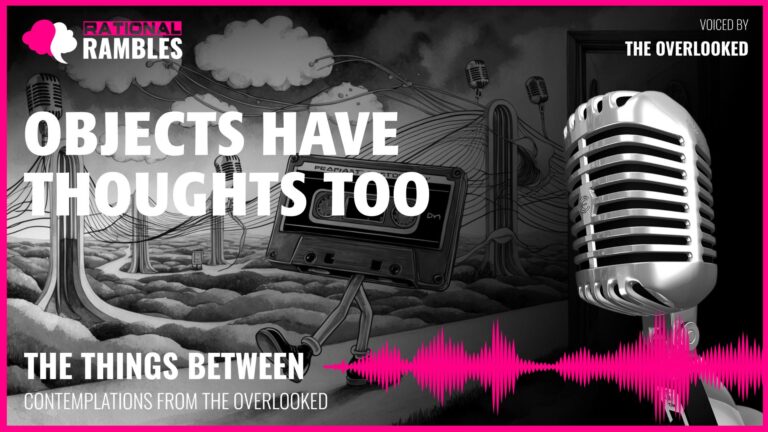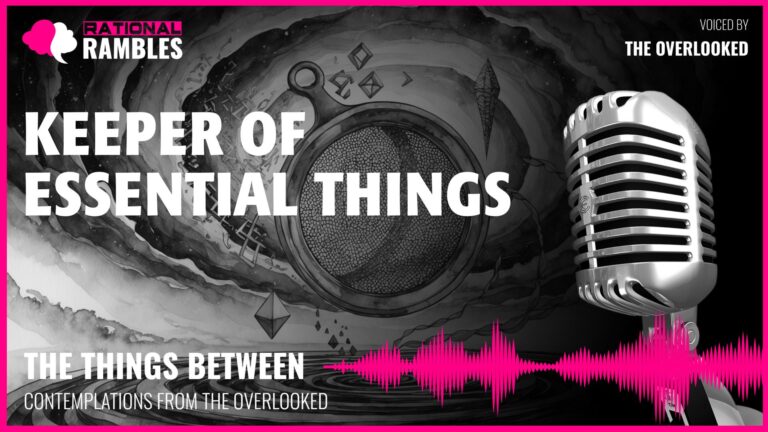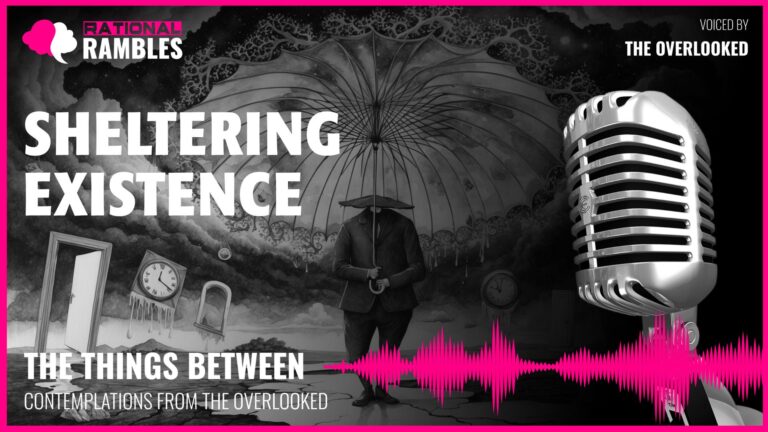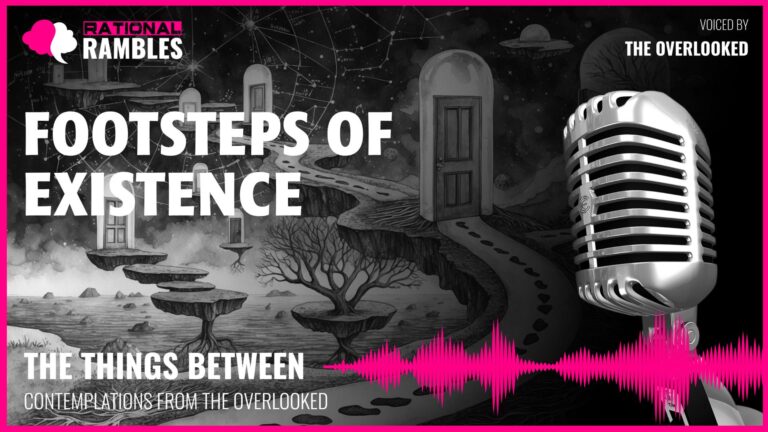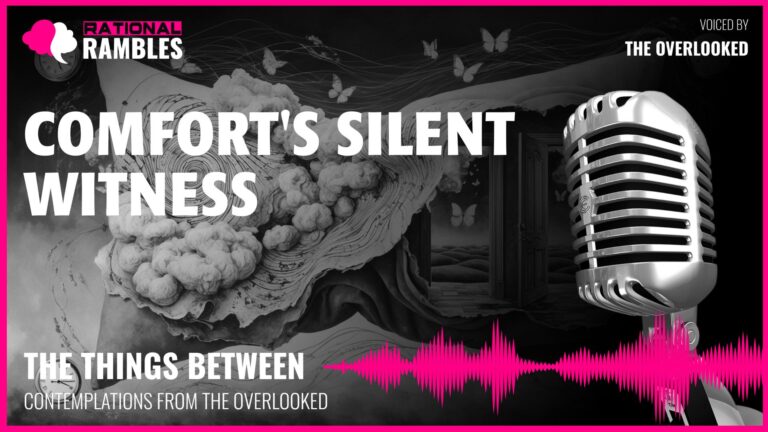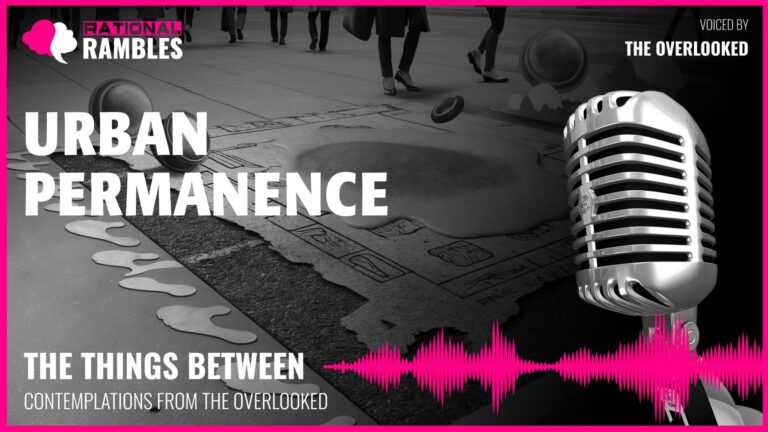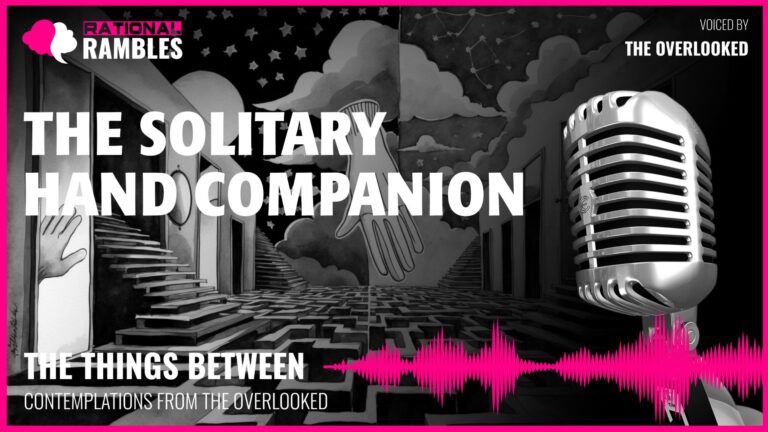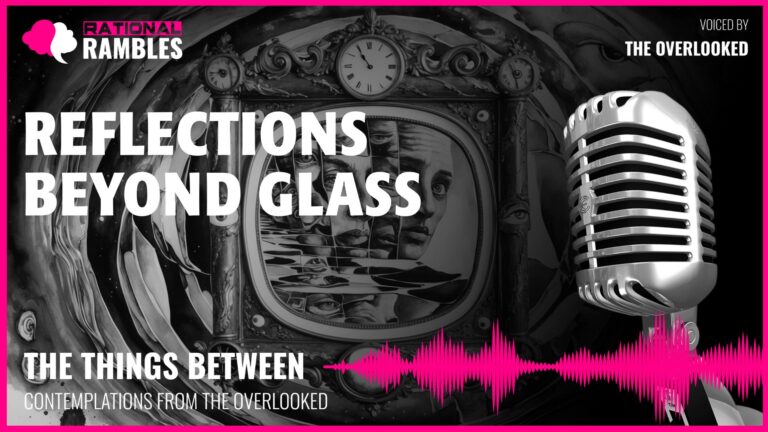The Social Construction of Value: Understanding Worth in a Material World
Introduction
In a world overwhelmingly defined by material exchange, few concepts are as pervasive yet enigmatic as value. We navigate daily through a complex web of transactions, assigning worth to objects, experiences, and even relationships, often without pausing to examine the profound philosophical foundations that underlie these evaluations. What makes something valuable? Is worth intrinsic or assigned? How do social agreements transform ordinary materials into coveted possessions? These questions strike at the heart of human social organization and individual experience.
The concept of value exists at a fascinating intersection of philosophy, economics, sociology, and psychology. It represents one of humanity’s most successful and enduring social constructions—a shared agreement that transforms the material world through collective belief. From the abstract notions of currency to the deeply personal assessments of what constitutes “the good life,” value judgments permeate every aspect of human existence.
This article explores the philosophical dimensions of value, particularly as embodied in currency—perhaps the most explicit manifestation of our collective agreement about worth. We will examine how inanimate objects acquire significance beyond their material properties, how value exists in a curious state between objective reality and social construction, and how our relationship with symbols of worth reveals profound truths about human nature and social organization.
The Ontology of Value: Between Material Reality and Social Construction
At its most fundamental level, the philosophy of value confronts us with a paradox: the curious dual nature of worth as both physical and metaphysical. Consider currency—materially, it consists merely of paper, ink, metal, or digital code, yet it commands extraordinary power in human affairs. This duality raises profound ontological questions about the nature of existence itself.
The Material Paradox
Currency presents us with what philosophers might call an ontological puzzle. A banknote, physically speaking, is nothing more than processed plant fiber and printed ink, with perhaps some embedded security features. Its intrinsic material value—what it would be worth if we considered only its physical properties—is negligible. Yet this same object can command goods and services thousands of times more valuable than its material components.
This paradox illuminates a broader philosophical truth: many of our most important concepts exist in this curious ontological middle ground, where physical reality and social agreement converge to create something greater than the sum of material parts. The philosopher John Searle describes this phenomenon through his concept of “institutional facts”—facts that exist only within human institutions and depend on collective agreement. Unlike “brute facts” (such as the molecular composition of the paper), institutional facts (like the value of currency) require continued human belief to exist.
This understanding helps us recognize that value is neither purely objective (existing independently of human perception) nor purely subjective (existing only in individual minds). Instead, it occupies what philosophers call an intersubjective realm—reality created through shared human agreement.
The Transformation Through Social Agreement
How does this transformation occur? How does ordinary matter become valuable? The answer lies in what the philosopher Wilfrid Sellars called “the space of reasons”—the realm of justification, meaning, and social practice. Currency gains its power through a complex network of social promises, institutional guarantees, and collective acceptance.
This transformation reveals something profound about human societies: our unique capacity to create and sustain abstract value systems that coordinate behavior across vast populations of unrelated individuals. As the anthropologist David Graeber noted in his work on debt, these systems of value represent “one of the most impressive achievements of human collective creativity.”
What’s particularly fascinating is how we move seamlessly between recognizing money as “just paper” and treating it as profoundly valuable. This cognitive flexibility—the ability to hold simultaneously the brute facts and the institutional facts—is a distinctly human capacity. We know the material truth while simultaneously participating in the social agreement.
The Metaphysics of Trust
At its foundation, the ontology of value rests upon trust—perhaps the most metaphysically complex ingredient in human social relations. Currency functions as physical embodiment of trust, a tangible representation of our faith in social contracts, governmental institutions, and future exchange potential.
This trust creates a unique temporal dimension to value. Unlike most physical objects, whose properties exist entirely in the present, currency’s worth exists partially in the future—in its potential to be exchanged. This temporal extension connects to Martin Heidegger’s concept of “being-towards” or “Dasein” as inherently future-oriented, always projecting itself forward in time. Currency exists not just as what it is now, but as what it will enable later.
The value embodied in money thus represents a curious ontological category—something that exists through collective agreement, sustained by institutional frameworks, and oriented toward future possibilities. It is simultaneously material and immaterial, present and future-directed, personal and impersonal. This philosophical complexity helps explain why currency has been such a rich source of philosophical reflection, from Aristotle’s contemplations on exchange in Nicomachean Ethics to Marx’s analyses of commodity fetishism.
Identity and Fungibility: The Philosophy of Sameness and Difference
Currency introduces us to a fascinating philosophical tension between identity and fungibility—the quality of being interchangeable. This tension raises profound questions about the nature of identity itself and challenges our intuitions about what makes something uniquely itself.
The Paradox of the Ship of Theseus
The ancient philosophical puzzle known as the Ship of Theseus asks: if we gradually replace every plank and nail of a ship until no original materials remain, is it still the same ship? Currency presents us with a similar but inverted puzzle. A banknote travels through thousands of hands, collecting oils, dirt, microbes, and physical alterations. Its molecular composition changes significantly over time, yet we consider it the same banknote throughout this journey.
This raises profound questions about what constitutes identity. Is identity tied to material continuity, function, history, or some combination of these factors? The philosopher John Locke, in discussing personal identity, suggested that identity persists through continuity of consciousness rather than material sameness. For currency, identity seems defined primarily by its institutional role and denomination rather than its physical composition.
Yet unlike personal identity, which we typically consider unique and irreplaceable, currency introduces the concept of fungibility—the quality of being mutually interchangeable with other identical items. One ten-dollar bill can be freely substituted for another without meaningful loss. This fungibility stands in stark contrast to how we think about personal identity or cherished possessions, which we consider unique and irreplaceable.
The Tension Between Personal and Impersonal
This fungibility creates a philosophical tension in how we relate to currency. On one hand, money is intensely personal—we carry it close to our bodies, protect it, worry about it, and make deeply personal decisions about its use. On the other hand, it is deliberately designed to be impersonal—standardized, anonymous, and interchangeable.
This tension manifests in how currency simultaneously connects and separates people. It enables transactions between strangers who may share no values, language, or culture beyond the recognition of the currency’s worth. Yet this same quality makes the exchange impersonal, stripping away the social connections that characterized earlier forms of economic exchange such as gift economies or direct barter.
As Georg Simmel observed in The Philosophy of Money (1900), money creates a curious form of connection that simultaneously distances us from others: “Money is concerned only with what is common to all: it asks for the exchange value, it reduces all quality and individuality to the question: How much?”
Collective Identity Through Exchange
Despite its impersonal nature, currency contributes to collective identity formation. National currencies feature cultural symbols, historical figures, and architectural achievements that reinforce shared identity. The Euro project explicitly aimed to foster European identity through shared currency. In this way, the medium of exchange becomes a medium of collective self-definition.
This connects to Benedict Anderson’s concept of “imagined communities”—the idea that national identity exists primarily through shared symbolic systems rather than direct interpersonal relationships. Currency functions as one such symbolic system, circulating not just economic but also cultural value throughout a community.
The physical journey of currency—passing from hand to hand across social, economic, and sometimes national boundaries—creates a material network of connections. A single banknote might participate in hundreds of human exchanges, creating an invisible thread of connection between otherwise unrelated individuals. This physical movement traces the outlines of human economic community in a tangible form.
Value as Social Consensus: The Intersubjective Nature of Worth
Perhaps no aspect of currency is more philosophically revealing than its dependence on collective agreement. Unlike many valuable objects that possess utility independent of social recognition (food nourishes whether or not others agree it has value), currency’s worth exists almost entirely through social consensus.
The Metaphysics of Social Facts
The philosopher John Searle distinguishes between “brute facts” that exist independently of human belief (like the atomic structure of gold) and “institutional facts” that depend on collective intention (like the value of currency). This distinction helps us understand currency as a social fact—something that exists only because we collectively believe it exists.
This understanding connects to a longstanding philosophical debate about the nature of reality. Realists maintain that reality exists independently of human perception, while constructivists argue that social reality is created through human agreement and practice. Currency offers a fascinating middle ground—while its physical properties are brute facts, its value exists primarily through construction.
This duality illuminates the power of collective belief to create tangible effects in the world. The paper of a banknote would provide little warmth as fuel or utility as shelter, yet through collective agreement, it can secure both heat and housing. This transformation from physical insignificance to social power occurs through what the philosopher John Austin called “performative utterances”—declarations that change reality merely by being pronounced by authorized entities.
The Fragility and Resilience of Consensus
The history of currency reveals both the remarkable resilience and the potential fragility of social consensus about value. During periods of hyperinflation, the collective agreement about a currency’s worth can rapidly disintegrate, transforming once-valuable banknotes into nearly worthless paper. The philosopher Friedrich Nietzsche might recognize in such moments his concept of the “transvaluation of values”—a radical reordering of what society deems valuable.
Yet what’s equally remarkable is how rarely this consensus completely collapses. Even in severely challenged economies, currency typically retains some value, and new systems of valuation emerge. This persistence suggests something fundamental about human social organization—our need for systems of value that facilitate exchange and cooperation beyond immediate social circles.
The resilience of monetary value connects to what philosophers call “coordination problems” in social organization. Currency solves the problem of coordinating value assessments across diverse individuals and groups who may share little beyond the need to exchange goods and services. Even when flawed, this coordination function proves remarkably durable.
Beyond Material Value: Symbolic and Psychological Dimensions
The consensus that sustains currency extends beyond agreement about exchange value to include rich symbolic and psychological dimensions. Currency functions not just as a medium of exchange but as what philosophers call a “thick concept”—one that combines factual and evaluative content.
Psychologically, money operates as what the psychoanalyst Jacques Lacan might call an “object of desire”—something desired not for its intrinsic properties but for what it represents or enables. We desire money not for itself but for its potential transformation into other forms of value. This makes currency a uniquely abstract form of desire—one step removed from the concrete objects or experiences it can secure.
Symbolically, money represents different things to different people: security, freedom, status, power, opportunity, or even moral corruption. These symbolic associations influence how we relate to currency beyond its strict economic function. As the philosopher and sociologist Georg Simmel observed, money serves as “the purest form of the tool”—valuable not in itself but for what it enables.
This symbolic dimension explains why money can evoke such strong emotional and moral responses. When we speak of “dirty money,” “blood money,” or “hard-earned cash,” we’re acknowledging that the moral and emotional contexts of acquisition and exchange matter to us, even though they don’t alter the currency’s spending power.
The Ethics of Exchange: Moral Dimensions of Value Systems
Currency exists in a curious ethical space—it facilitates human exchange without itself possessing moral qualities. Yet this moral neutrality masks the complex ethical dimensions of value systems and the exchanges they enable.
The Moral Neutrality of the Medium
Currency itself is morally neutral—the same banknote can purchase medicine or poison, fund charity or crime. This neutrality creates what philosophers call a “moral distance” between the medium of exchange and its uses. Unlike a purpose-specific tool (a surgical scalpel is designed to heal, a weapon to harm), currency carries no inherent moral direction.
This neutrality connects to the philosophical concept of instrumental versus intrinsic value. Currency possesses almost pure instrumental value—it is valuable only as a means to other ends, not as an end in itself. This instrumental quality gives it ethical flexibility but also creates moral ambiguity. As Aristotle noted in his Politics, this quality made money uniquely suited for exchange but potentially corrupting when accumulated for its own sake.
The moral neutrality of currency raises questions about responsibility. If money is merely a tool, where does moral responsibility lie? With the individual making choices about its use? With the systems that distribute it unequally? With the institutions that create and regulate it? These questions connect to broader philosophical debates about moral agency and responsibility in complex social systems.
Value Systems and Justice
While individual units of currency may be morally neutral, the systems of valuation they represent raise profound questions of justice. What labor is valued and why? How do we decide what activities deserve compensation? Why are some forms of essential work (like caregiving) often economically undervalued?
These questions connect to what philosophers call “theories of justice”—frameworks for understanding what constitutes a fair distribution of resources and opportunities. John Rawls’ influential “justice as fairness” approach asks us to imagine designing a society from behind a “veil of ignorance,” not knowing what position we would occupy within it. Such thought experiments help us evaluate whether our systems of economic valuation reflect considered principles of justice or merely entrench existing power structures.
The philosopher Elizabeth Anderson distinguishes between “market norms” that appropriately govern some domains of life and “non-market norms” essential for others. Her work highlights the ethical complexities that arise when market valuation systems extend into domains traditionally governed by other forms of value—like education, healthcare, or civic participation.
The Ethics of Instrumental Relationships
Currency creates what philosophers call “instrumental relationships”—interactions based on utility rather than intrinsic connection. I may not care about the cashier’s life or values, nor they about mine, yet we can successfully complete an economic exchange.
Immanuel Kant’s categorical imperative states that we should treat people as ends in themselves, never merely as means. But monetary transactions seem inherently structured around treating others instrumentally—as providers of goods or services rather than as complete humans. This tension raises questions about whether economic exchanges inherently conflict with ethical ideals of human relationship.
Yet instrumental relationships also enable cooperation across differences that might otherwise prevent meaningful interaction. Currency allows people with radically different worldviews, values, or backgrounds to engage in mutually beneficial exchange without requiring agreement on fundamental questions of meaning or purpose. This pragmatic function suggests that instrumental relationships, while limited, may serve important ethical functions in diverse societies.
Material and Post-Material Values
Contemporary philosophy increasingly engages with the distinction between material and post-material values, particularly as societies achieve higher levels of material prosperity. The philosopher Ronald Inglehart’s work suggests that as basic material needs are met, people increasingly prioritize post-material values like self-expression, quality of life, and meaning.
This shift raises questions about the proper role of monetary valuation in a good human life. If currency primarily facilitates material exchange, how do we properly value and cultivate the non-material goods that contribute to human flourishing? This question connects to ancient philosophical traditions, from Aristotle’s eudaimonia (flourishing) to Buddhist perspectives on attachment and value.
The tension between material and post-material values manifests in philosophical critiques of consumerism and materialism. Thinkers from Thoreau to the Frankfurt School have questioned whether systems that reduce value primarily to monetary worth can adequately capture the full spectrum of human needs and aspirations.
Time, History, and Value: The Temporal Dimensions of Worth
Currency exists in a fascinating relationship with time. Unlike most physical objects that exist primarily in the present moment, currency’s value stretches across temporal dimensions, connecting past, present, and future in complex ways.
Value as Future Potential
The most striking temporal aspect of currency is its orientation toward the future. When we value money, we value not what it is but what it might become—its potential to transform into goods, services, or experiences not yet realized. This future orientation creates what philosophers call “modal” complexity—it exists in the realm of possibility rather than actuality.
This temporal projection connects to Martin Heidegger’s concept of human existence as inherently future-oriented. For Heidegger, humans are uniquely characterized by their capacity to project themselves forward in time, to exist in relation to possibilities rather than merely in the present moment. Currency institutionalizes this forward-looking orientation, creating a material token of future possibility.
The future-oriented nature of currency also manifests in phenomena like saving and investment, where present value is deliberately deferred for greater future return. This practice reveals complex philosophical attitudes toward time preference and delayed gratification. As the philosopher Derek Parfit explored in his work on personal identity and time, our willingness to sacrifice present satisfaction for future benefit suggests complex relationships between our present and future selves.
The Accumulation of History
While oriented toward the future, physical currency also accumulates history. A well-worn banknote bears the physical traces of its journey—creases, stains, tears, and microscopic changes that record its passage through countless hands and environments. This physical history creates what philosophers might call a “temporally extended object”—one whose current state incorporates and reflects its past.
This accumulation of history without memory creates an intriguing philosophical situation. The banknote bears the physical evidence of its journey but possesses no consciousness of that journey. This connects to philosophical questions about whether history requires memory or consciousness to be meaningful, or whether there is historical significance in changes not consciously registered.
The historian Fernand Braudel distinguished between different temporalities of history: the rapid time of events, the slower rhythms of social and economic cycles, and the near-motionless time of geographical and environmental structures. Currency participates in all three—changing hands in moments, reflecting economic cycles over years, and embodying deep structures of human exchange that persist across centuries.
Currency as Intergenerational Contract
At its most foundational level, fiat currency represents an intergenerational social contract. Its value depends on the expectation that future generations will continue to honor the same agreement about its worth. This creates what philosophers call “diachronic” obligations—commitments that extend across time rather than existing only in the present.
This temporal extension raises questions about intergenerational justice and obligation. What responsibilities do we have to maintain systems of value for future generations? What rights do future generations have regarding the economic systems we establish today? These questions connect to broader philosophical debates about our ethical obligations to those who do not yet exist.
The philosopher Edmund Burke viewed society itself as a partnership “not only between those who are living, but between those who are living, those who are dead, and those who are to be born.” Currency, as a system that persists beyond individual lifespans, embodies this intergenerational partnership in material form.
The Phenomenology of Exchange: Experiencing Value
Beyond abstract philosophical considerations, currency creates distinctive phenomenological experiences—specific ways of perceiving, feeling, and engaging with the world. These experiential dimensions reveal important philosophical insights about how value systems shape human consciousness and relationship.
The Tactile Experience of Value
Physical currency creates unique sensory experiences that digital transactions cannot replicate. The texture of paper notes, the weight of coins, the distinctive sounds of currency being handled—these sensory qualities give material form to otherwise abstract value. This connects to what philosophers call “embodied cognition”—the idea that thinking and understanding are fundamentally shaped by physical experience.
The phenomenologist Maurice Merleau-Ponty emphasized how perception and understanding are rooted in bodily experience. For Merleau-Ponty, we understand the world not as detached observers but as embodied participants. The physical interaction with currency—counting, folding, storing, exchanging—creates embodied understanding of economic concepts that might otherwise remain abstract.
This tactile dimension helps explain the psychological difference between spending physical cash versus using digital payment methods. Research consistently shows that people spend more freely with credit cards or digital payments than with physical currency. The philosopher might interpret this as evidence that embodied experience creates different phenomenological relationships to value than abstract representation.
Emotional Dimensions of Exchange
Currency transactions create complex emotional experiences that range from anxiety to confidence, from shame to pride. These emotions aren’t incidental to economic exchange but constitute essential aspects of how we experience value systems.
The phenomenologist Jean-Paul Sartre might recognize in these emotions the experience of “being-for-others”—consciousness of how we appear to others through our economic transactions. The anxiety of counting out insufficient funds, the embarrassment of a declined card, the pride in making a significant purchase—all reflect consciousness of our economic selves as seen by others.
Different emotional relationships to currency reflect philosophical differences in value orientation. Some approach money with an attitude of abundance, others with a mindset of scarcity. These orientations create fundamentally different phenomenological experiences of the same objective amounts. As the philosopher William James observed, our perception is always selective and shaped by our purposes and concerns.
The Experience of Agency and Constraint
Currency creates simultaneous experiences of agency and constraint. Money expands our potential choices and actions while simultaneously limiting them according to our financial boundaries. This duality creates what philosophers call a “situated freedom”—liberty that exists within determined parameters rather than in absolute terms.
This balance of freedom and constraint varies dramatically across economic positions. Those with abundant resources experience currency primarily as expanding agency—opening possibilities rather than foreclosing them. Those with scarce resources experience more acutely the constraining aspects of the economic system, where lack of currency translates directly to limited possibilities.
The existentialist philosopher Simone de Beauvoir distinguished between “freedom” as an abstract capacity and “liberation” as the concrete ability to exercise that freedom within material conditions. Currency represents a material condition that significantly influences our lived experience of freedom versus constraint.
The Phenomenology of Valuation
Perhaps most fundamentally, currency shapes how we experience the act of valuation itself. By creating a universal metric of worth, monetary systems influence how we perceive value across domains—sometimes enabling comparison of otherwise incommensurable goods, sometimes reducing complex forms of worth to simplistic financial measures.
The philosopher Michael Sandel argues that market valuation tends to “crowd out” other forms of valuation. When we assign monetary value to something previously valued in non-monetary terms (like environmental resources or civic obligations), we may fundamentally change our phenomenological relationship to it. What was once experienced as intrinsically valuable may come to be experienced primarily in instrumental terms.
This crowding-out effect raises philosophical questions about the proper scope of market valuation and the importance of maintaining multiple, irreducible systems of worth. The philosopher Elizabeth Anderson suggests that different spheres of life appropriately operate according to different norms of valuation, and problems arise when market norms infiltrate domains better governed by other forms of value.
Digital Value and the Evolution of Worth
As physical currency increasingly gives way to digital representations of value, profound philosophical questions arise about how this transformation affects our relationship to worth, exchange, and economic identity.
The Ontology of Digital Value
Digital currency presents new ontological questions. If traditional currency exists in the curious space between material object and social agreement, digital currency pushes further toward pure social construction. A bitcoin has no physical form whatsoever—it exists entirely as information within distributed networks.
This shift connects to philosophical debates about information ontology. Some philosophers, like Luciano Floridi, argue that information constitutes a distinct ontological category—neither purely physical nor purely mental, but a third form of reality with its own properties and characteristics. Digital currencies might represent the purest economic manifestation of this information ontology.
The distributed nature of many digital currencies also raises questions about location and identity. While a physical banknote exists in a specific location at a specific time, digital currencies exist simultaneously across multiple nodes in a network. This distributed existence challenges traditional philosophical concepts of identity that assume unique spatiotemporal location.
Trust and Verification in Digital Systems
Traditional currency systems rest upon trust in centralized authorities like governments and central banks. Many digital currencies replace this centralized trust with distributed verification systems. This shift represents what philosophers might call an epistemological revolution—a fundamental change in how we establish the truth of economic claims.
This transformation connects to broader philosophical questions about knowledge, justification, and trust in contemporary society. The philosopher Miranda Fricker’s work on epistemic justice explores how social systems determine whose claims are trusted and whose are dismissed. Digital verification systems potentially democratize economic trust by replacing institutional authority with mathematical verification accessible to all participants.
Yet this shift also raises questions about technological accessibility and new forms of exclusion. If economic participation increasingly requires technological literacy and access, new forms of epistemic injustice may emerge based on technological rather than traditional social divisions.
Phenomenological Shifts in Digital Exchange
The move from physical to digital currency creates significant phenomenological changes in how we experience economic exchange. The tactile dimension of counting, holding, and physically transferring currency disappears, replaced by abstract representations on screens.
This transformation connects to what the philosopher Albert Borgmann calls the “device paradigm”—the tendency of modern technology to make the machinery and effort behind commodities invisible, presenting only the end result. Digital currency takes this concealment further, making not just the production of value but its very substance imperceptible to the senses.
Some philosophers worry that this increasing abstraction diminishes our embodied understanding of economic exchange. The phenomenologist Hubert Dreyfus emphasized that embodied, situated knowledge provides forms of understanding that abstract representation cannot capture. The move to digital currency may sacrifice these embodied forms of economic knowledge.
New Frontiers of Value: NFTs and Virtual Goods
Recent innovations like Non-Fungible Tokens (NFTs) and virtual goods push the boundaries of value even further, creating entirely new categories of worth that exist solely in digital realms. These developments raise fascinating philosophical questions about authenticity, scarcity, and the nature of ownership.
The philosopher Walter Benjamin’s influential essay “The Work of Art in the Age of Mechanical Reproduction” argued that reproduction technologies fundamentally changed our relationship to art by eliminating the “aura” of original works. NFTs attempt to recreate artificial scarcity and uniqueness in inherently reproducible digital goods, raising questions about whether such constructed scarcity can generate the same kinds of value as natural scarcity.
Virtual goods in online environments challenge conventional philosophical understandings of property, which typically assume material objects with physical exclusivity. Digital goods can be simultaneously possessed by multiple users without diminishment, creating what economists call “non-rival” goods. This non-rivalry requires rethinking traditional philosophical justifications for property rights based on scarcity and exclusive use.
Conclusion: Value Beyond Measure
Our exploration of value through the lens of currency reveals complex philosophical terrain. From ontological questions about the nature of value to ethical considerations about just exchange, from phenomenological experiences of worth to evolving digital frontiers, currency offers a fascinating window into how humans create, maintain, and transform systems of value.
What emerges most clearly is the remarkable human capacity to create shared systems of meaning that transcend individual perspective. Value exists neither as brute physical fact nor as mere subjective opinion, but as intersubjective reality—created through collective agreement yet experienced as objectively real. This capacity for collective construction of meaningful reality represents one of humanity’s most distinctive and powerful characteristics.
Currency also reveals the inseparable connection between philosophical abstractions and embodied experience. Value is simultaneously conceptual and visceral, theoretical and practical. We think about value systems with our minds but experience them through our bodies—in the weight of coins, the anxiety of insufficient funds, the relief of debt repaid, the anticipation of future purchases.
Perhaps most importantly, our examination reveals the multiplicity of value systems that operate simultaneously in human life. While currency provides a powerful universal metric, many of our most significant values resist monetary measurement. Love, justice, beauty, meaning, and purpose operate according to different logics of worth than market exchange.
As we navigate increasingly complex economic systems and digital transformations of value, this philosophical perspective offers valuable insight. It reminds us that all systems of value—from the most ancient barter to the most cutting-edge cryptocurrency—rest upon shared human agreements that we collectively create and maintain. Understanding the philosophical foundations of these agreements helps us participate more consciously in the ongoing human project of determining what truly matters and why.
In the end, currency’s philosophical significance extends far beyond economics. It offers a tangible manifestation of how humans transform the material world through collective intention, how we navigate the tension between individual desire and social coordination, and how we create systems of meaning that outlast individual lives. In these small, circulating tokens of worth, we can discern the outlines of humanity’s most remarkable achievement—the creation of shared worlds of meaning.


